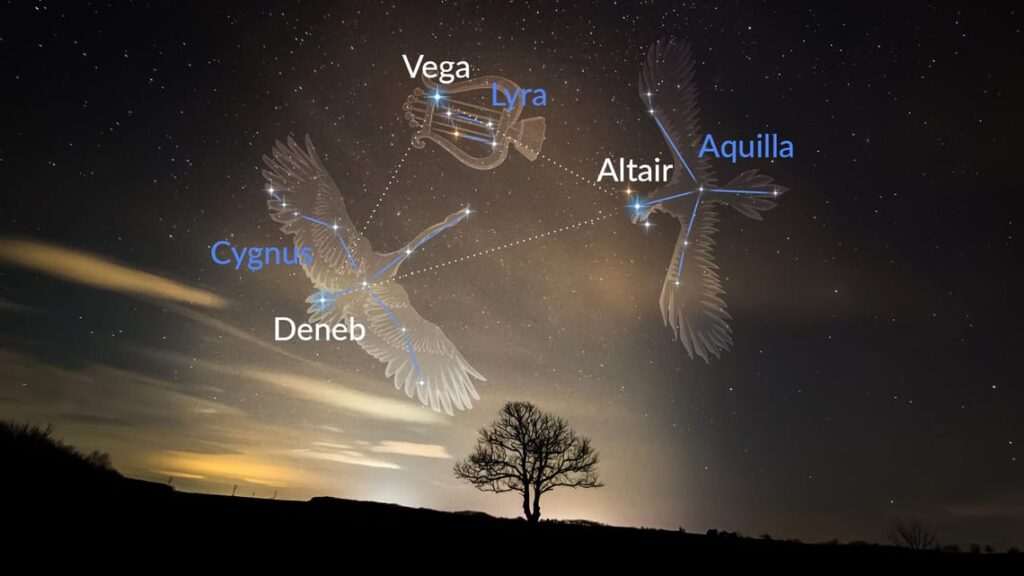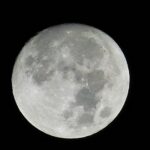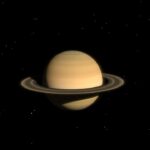There’s something magical about spending a warm summer night under the stars, especially in a place like the Kornati Islands, where the starry sky reveals its true miracle without light barriers. The islands offer many attractions to be seen during the day. Still, for the lucky ones who are there at night, a dazzling display of summer constellations awaits. Whether you’re an amateur or an experienced astronomer, this memorable experience is sure to captivate. If you’re new to stargazing, this beginner’s guide to summer constellations will help you identify the most prominent constellations and their brightest stars, setting you on the path to a lifelong love of the cosmos.
Content
Discovering the Summer Triangle: A Cornerstone of Summer Constellations Stargazing
Discover the Most Recognizable and Visible Summer Constellations
Exploring the Lesser-Known and Less Visible Constellations of Summer
Essential Tools for Summer Constellations Stargazing
Discovering the Summer Triangle: A Cornerstone of Summer Constellations Stargazing
When embarking on a stargazing adventure during the warm summer months, one of the most notable features to look for in the night sky is the Summer Triangle. This striking asterism, which acts as a guiding star map, consists of three dazzling stars from separate constellations: Deneb from the Swan (Cygnus) constellation, Vega from Lyra, and Altair from the Eagle (Aquila) constellation. These luminous stars form a large, near-equilateral triangle that dominates the summer sky, providing an excellent reference point for amateur and seasoned stargazers.
The Summer Triangle’s prominence makes it easy to identify. It serves as a celestial gateway to other fascinating constellations and objects nearby. For instance, once you have located the Summer Triangle, you can easily find the Milky Way, which runs through the heart of Cygnus, and other constellations such as Hercules, Delphinus, and Sagittarius.
Additionally, the triangle’s stars lead the way to intriguing deep-sky objects, such as the Ring Nebula in Lyra and the North America Nebula in Cygnus, both of which can be observed with a small telescope.
How to Spot the Stars of the Summer Triangle
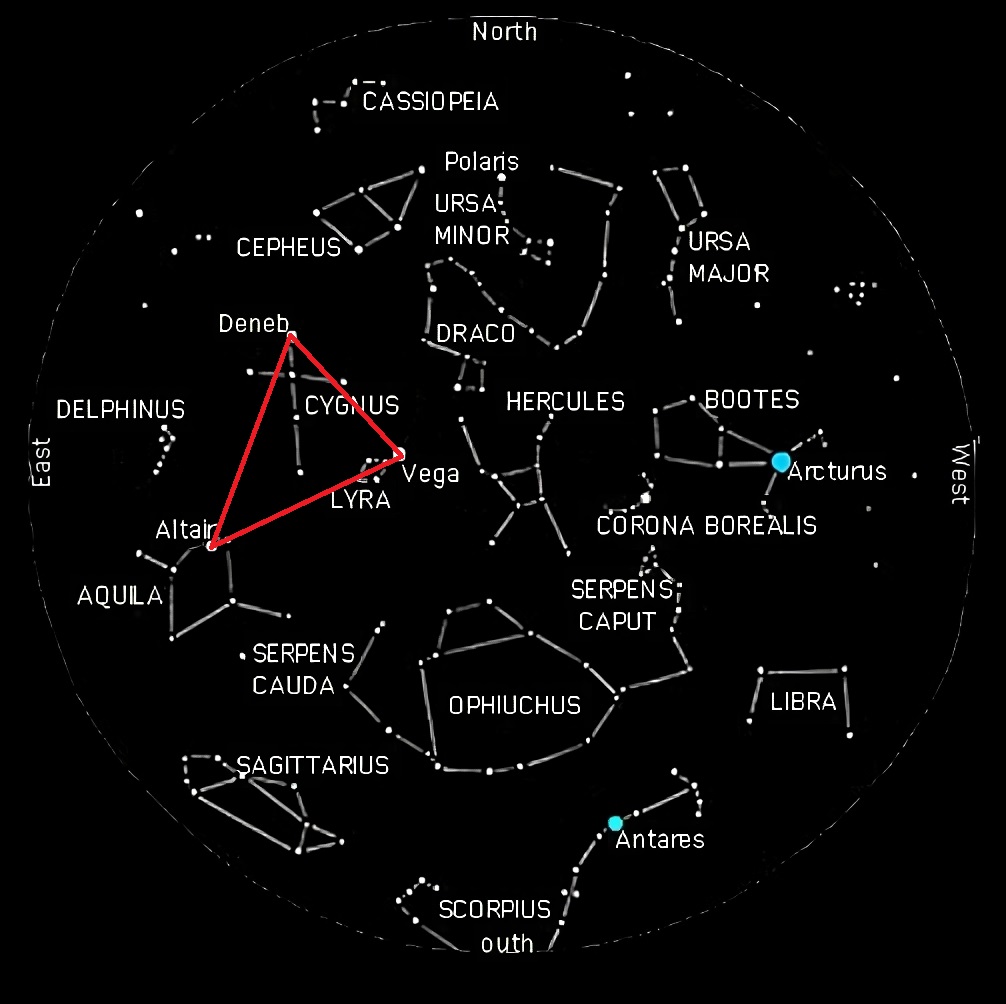
To spot the Summer Triangle, look overhead on a clear summer night in the Northern Hemisphere. Vega, the brightest of the three stars and the fifth-brightest star in the night sky will be the first to catch your eye. From there, you can trace a line to the slightly dimmer Altair and then to Deneb, which, although fainter than its companions, is still among the most luminous stars known.
Once you have identified the Summer Triangle, you can use it as a foundation for your stargazing journey, making navigating the many wonders of the summer night sky easier.
In summary, the Summer Triangle is a cornerstone of summer constellations stargazing, offering an accessible and captivating introduction to the celestial wonders above. By learning to identify this prominent asterism, you will be well on your way to exploring the multitude of constellations and celestial objects that grace the skies during the warmest months of the year.
Discover the Most Recognizable and Visible Summer Constellations
To make the most of your summer constellations stargazing experience, be sure to look out for these notable constellations and their brightest stars:
Hercules
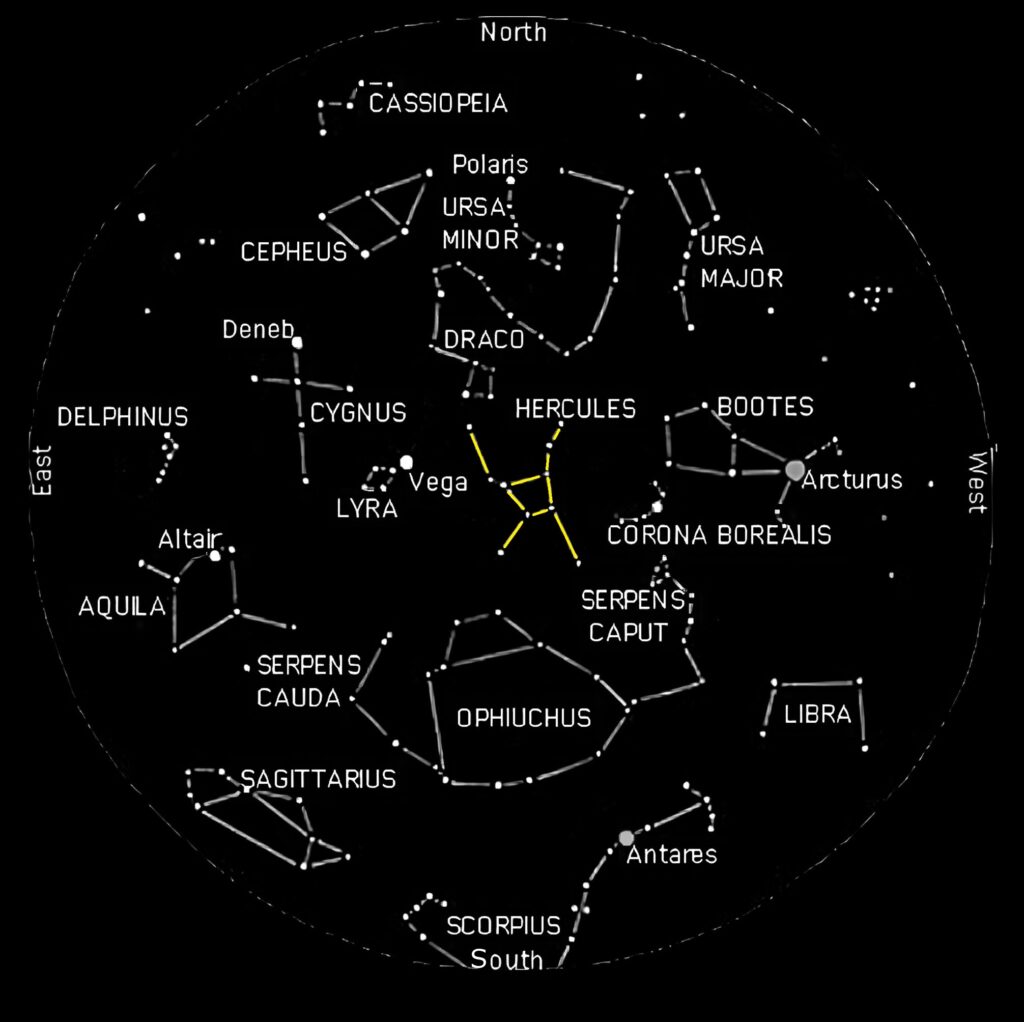
One of the most prominent constellations in the night sky, Hercules represents the mighty mythological hero known for his strength and feats. Its brightest star, β Hercules, also called Rutilicus, is a reddish-orange giant. The constellation features a distinctive quadrilateral shape, known as the Keystone, which helps to locate the famous globular cluster M13.
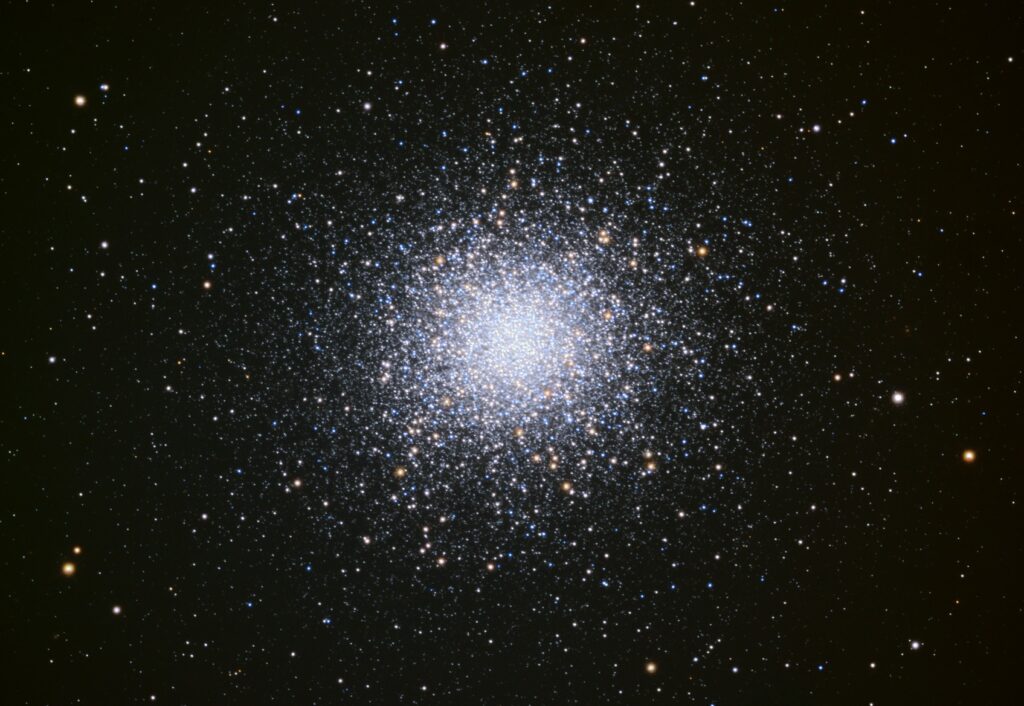
Swan (Cygnus)
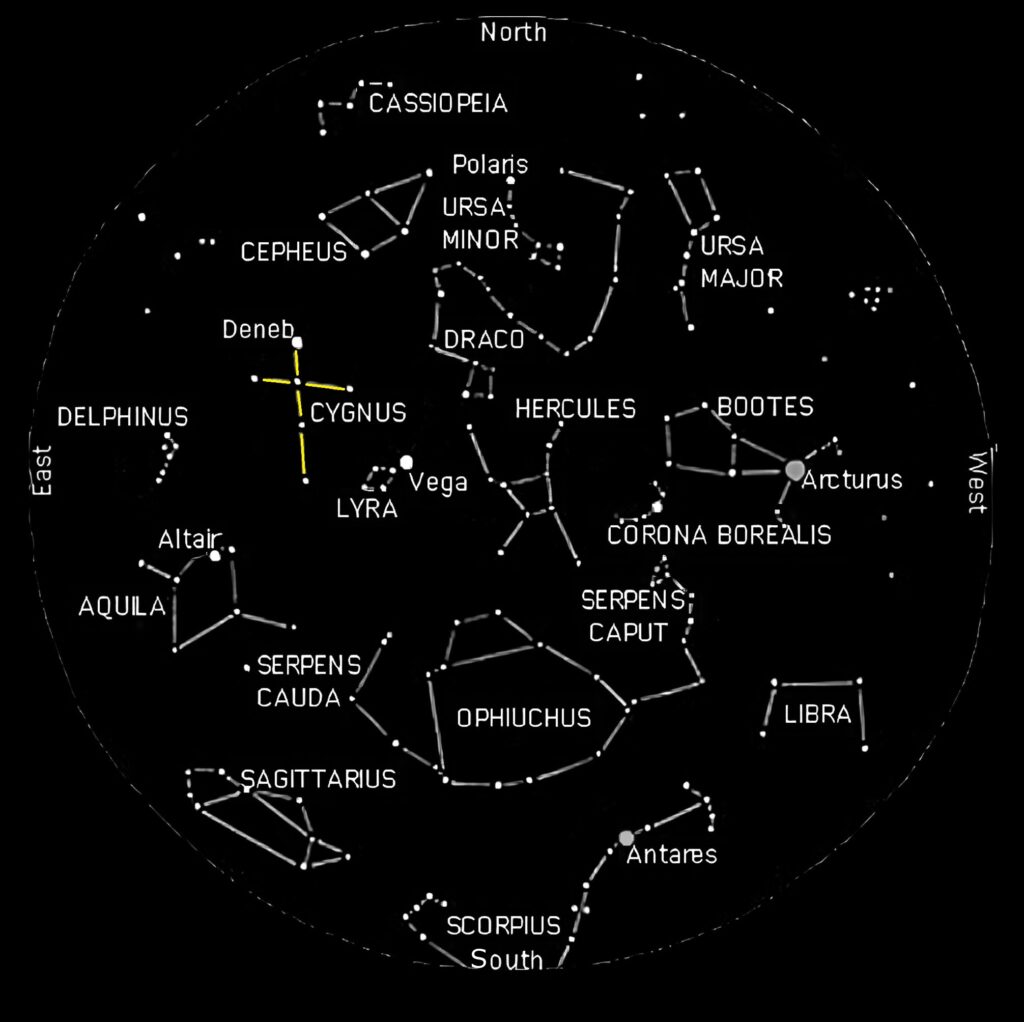
The Swan, or Cygnus, is a prominent constellation in the Northern Hemisphere, depicting a swan with outstretched wings flying through the Milky Way. Its brightest star, α Swan, also known as Deneb, is a luminous blue-white supergiant, forming one vertex of the Summer Triangle.
Cygnus is easily recognized by the prominent asterism called the Northern Cross.
Lyra

Lyra, a small constellation in the Northern Hemisphere, represents the lyre, a stringed musical instrument used in ancient Greece. Its brightest star, α Lyra, known as Vega, is a blue-white star and the fifth-brightest in the night sky, forming part of the Summer Triangle.
The constellation is home to the famous Ring Nebula, a planetary nebula that can be observed with a small telescope.
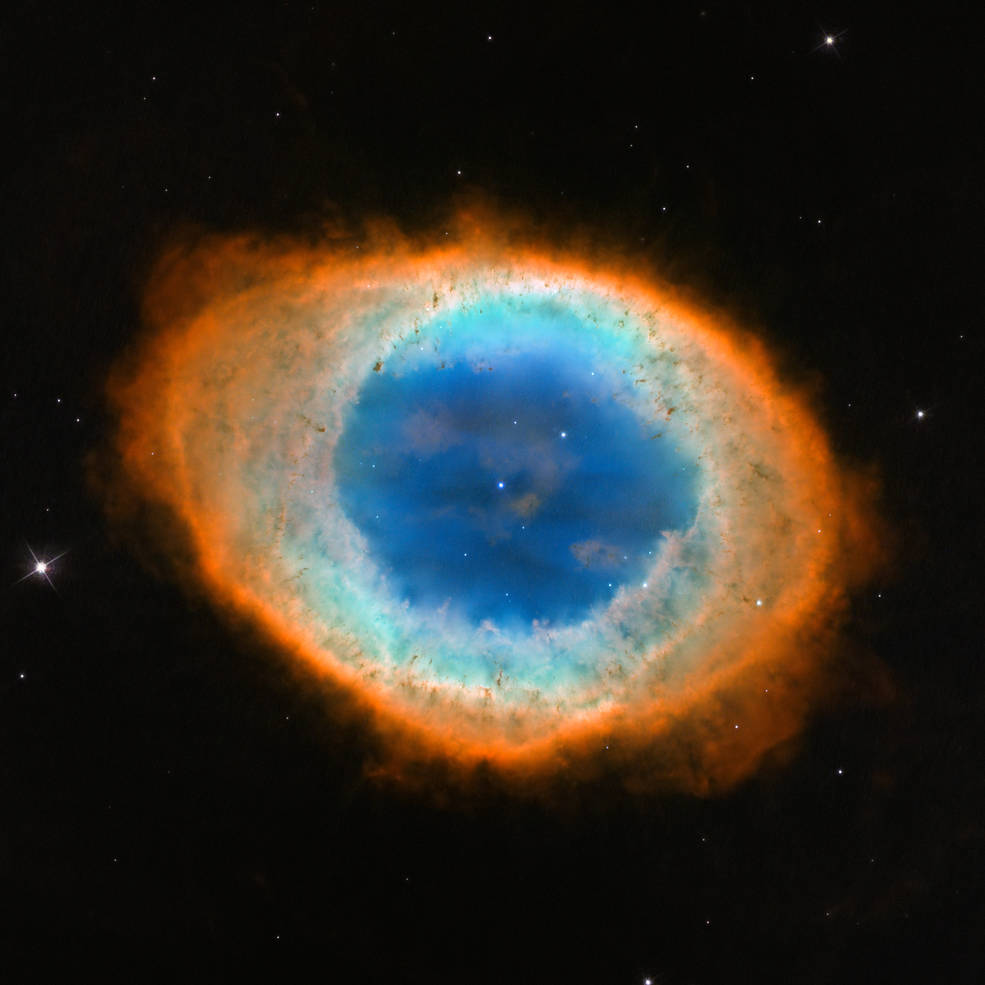
Eagle (Aquila)
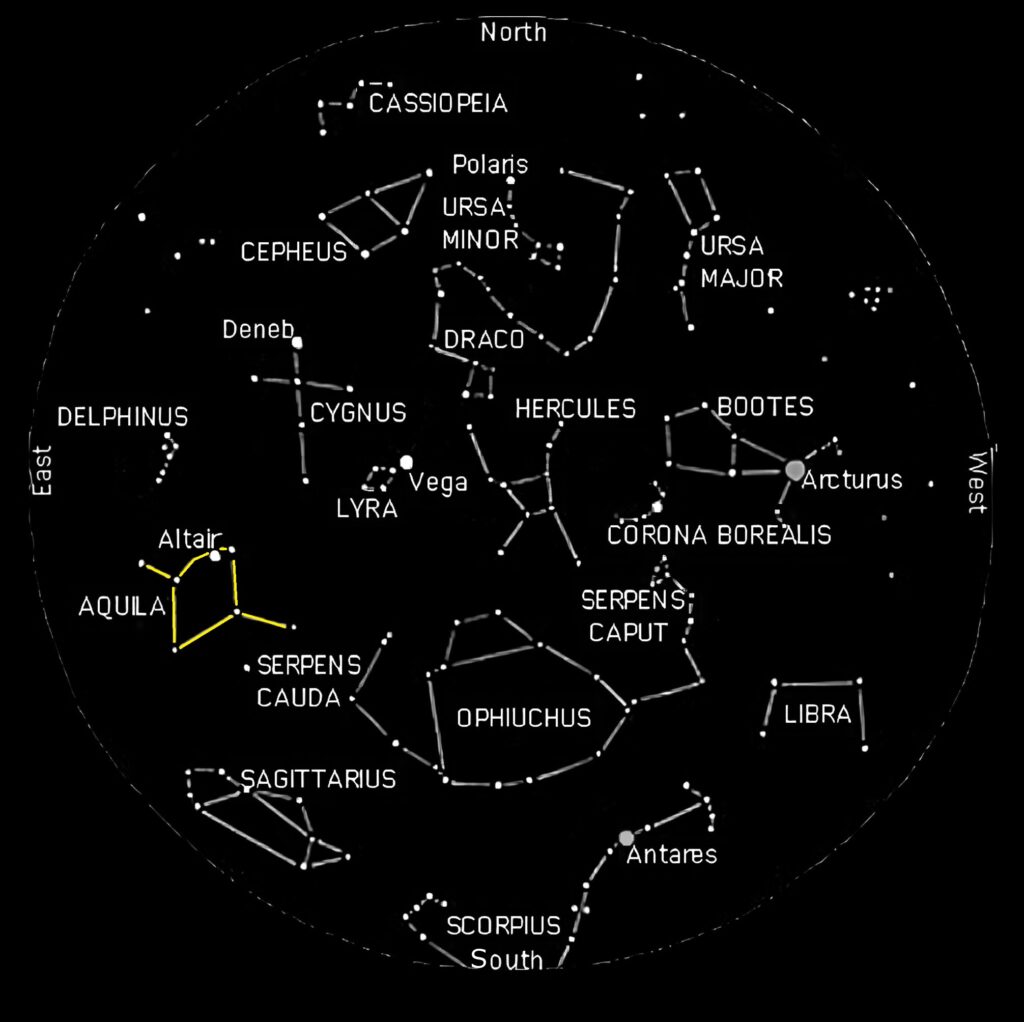
Aquila, the Eagle constellation, soars through the sky in the Northern Hemisphere and is easily recognized by its prominent, curved pattern of stars resembling an eagle in flight.
Its brightest star, α Orla, also known as Altair, is a white main-sequence star and part of the famous Summer Triangle.
Visible during summer, Aquila is often associated with the mythological eagle that carried Zeus’s thunderbolts.
Northern Crown (Corona Borealis)
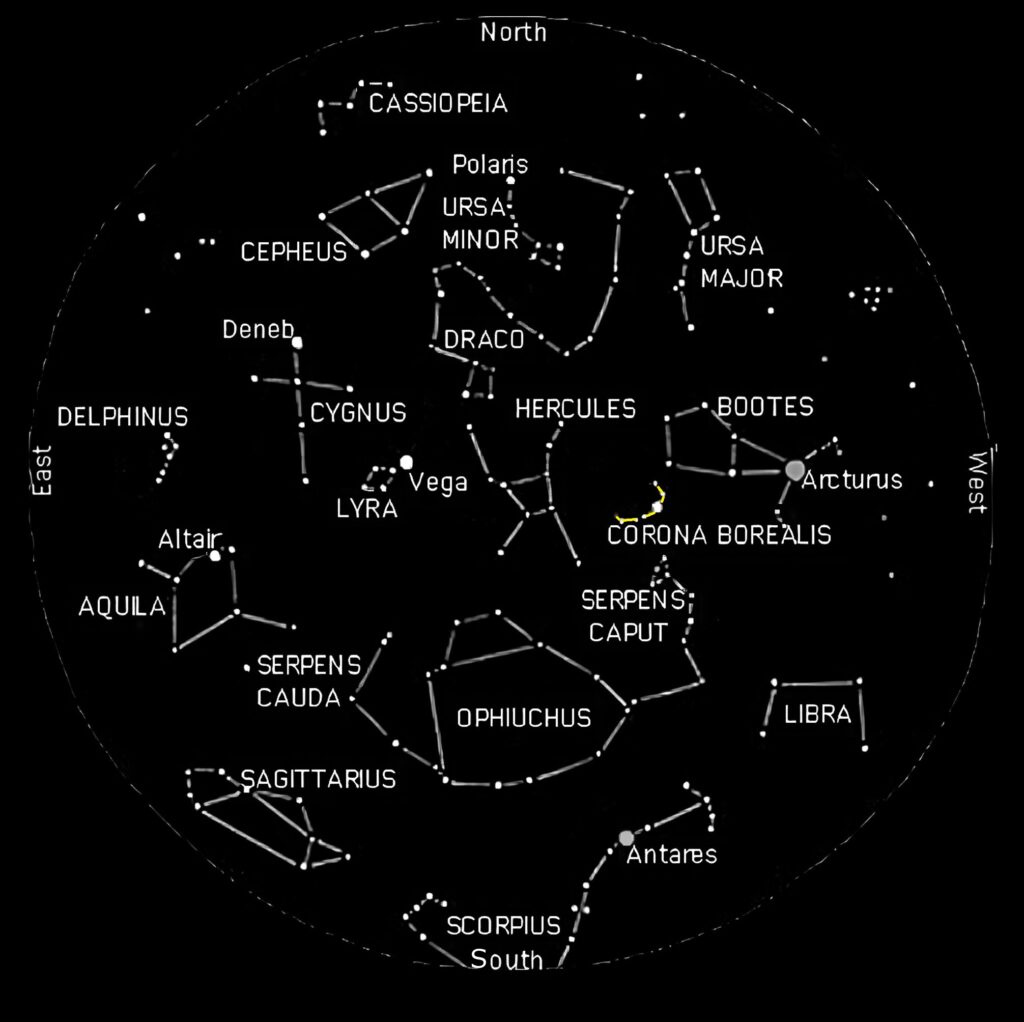
Corona Borealis, the Northern Crown constellation, is a small, elegant arc of stars resembling a regal crown or a tiara. Its brightest star, α Northern Crown, also known as Alfeka or Gemma, is a white main-sequence star and part of the constellation’s semicircular pattern. Visible during spring and summer nights in the Northern Hemisphere, Corona Borealis is steeped in mythology and linked to various legends, including Ariadne’s crown.
Sagittarius
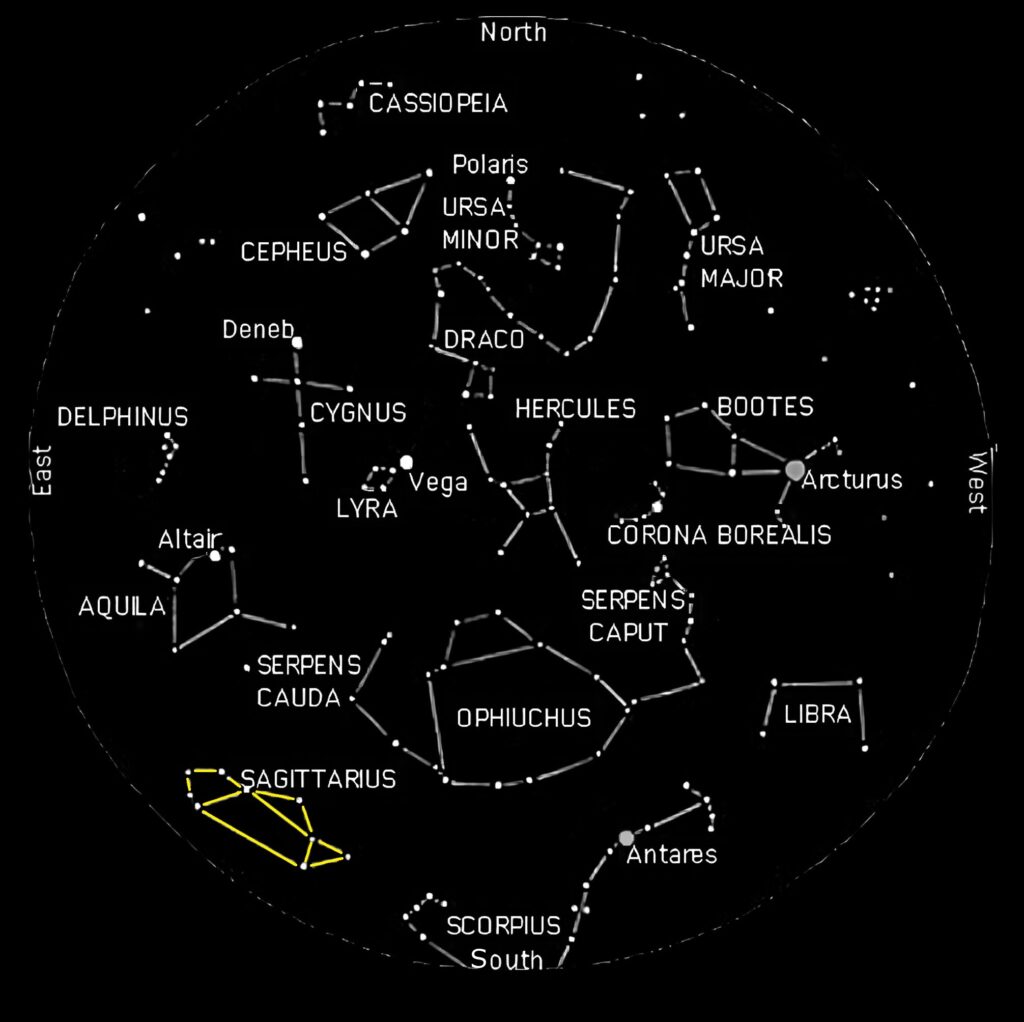
The constellation Sagittarius represents the mythological centaur, half-human, and half-horse, wielding a bow and arrow. Its brightest star, ε Sagittarius, is a binary star system.
Often associated with the Galactic Center of the Milky Way, Sagittarius is home to numerous star clusters and nebulae.
Its famous “Teapot” asterism is easily recognizable in the summer sky.
Scorpion (Scorpius)
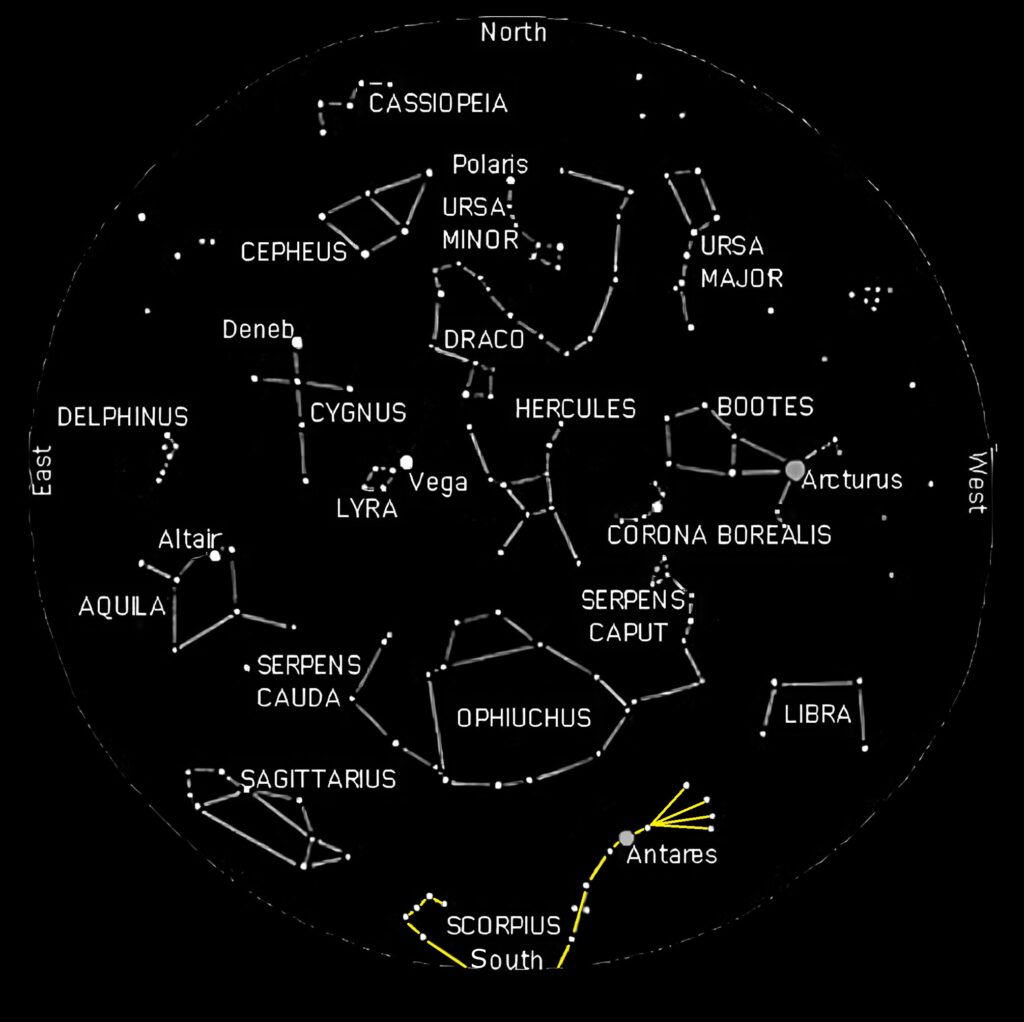
Scorpius, the Scorpion constellation, is one of the most easily recognized constellations in the sky, with its sinuous, curving shape resembling a scorpion with its raised tail.
Its brightest star, α Scorpion or Antares, is a red supergiant that appears distinctly reddish-orange. Scorpius is visible during summer in the Southern Hemisphere. It contains a wealth of celestial objects, including multiple star clusters and nebulae.
Volar (Bootes)
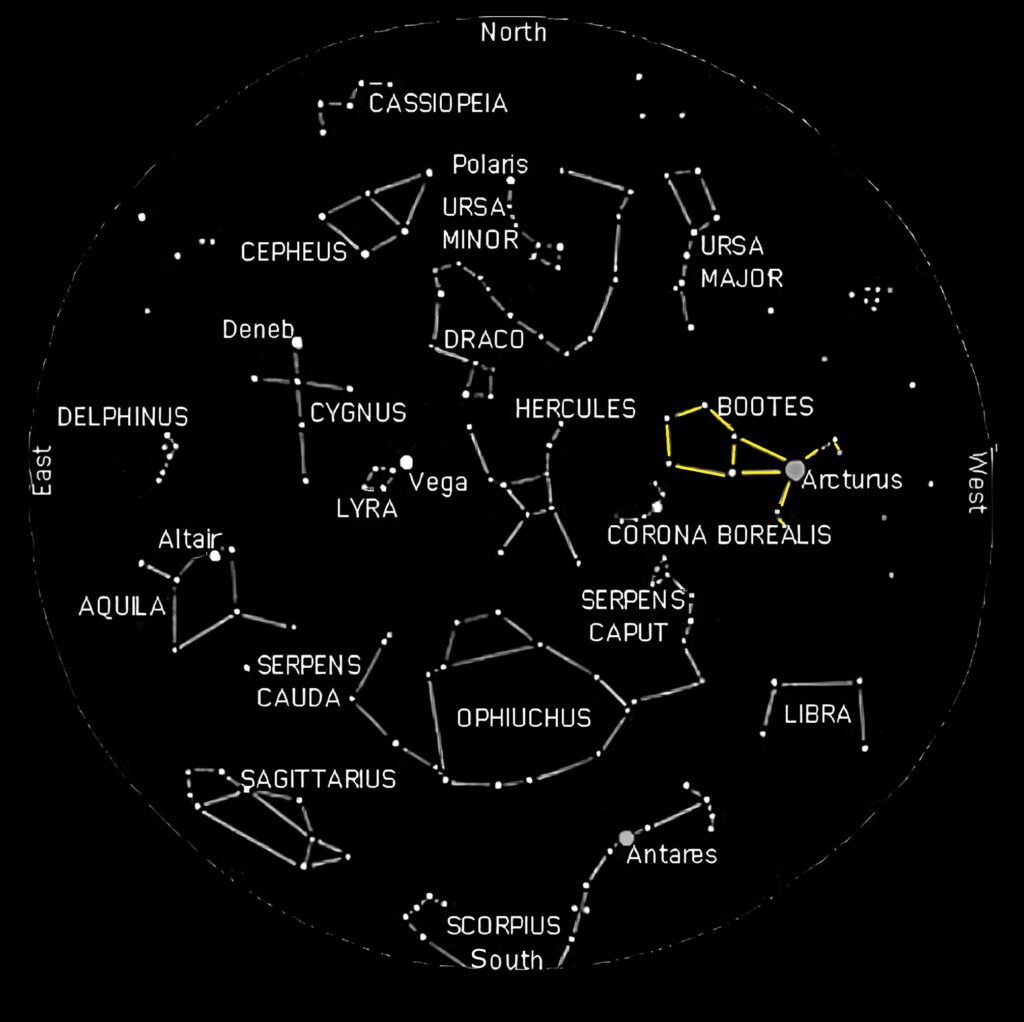
Bootes, also known as Volar, is a prominent constellation in the Northern Hemisphere, representing a herdsman or a plowman.
Its brightest star, α Volara or Arcturus, is a red giant and the fourth-brightest star in the night sky. Bootes are easily recognized by their kite-like shape and are best seen during the spring and summer months.
The constellation is home to several interesting celestial objects, including the famous globular cluster NGC 5466.
Serpent (Ophiuchus)
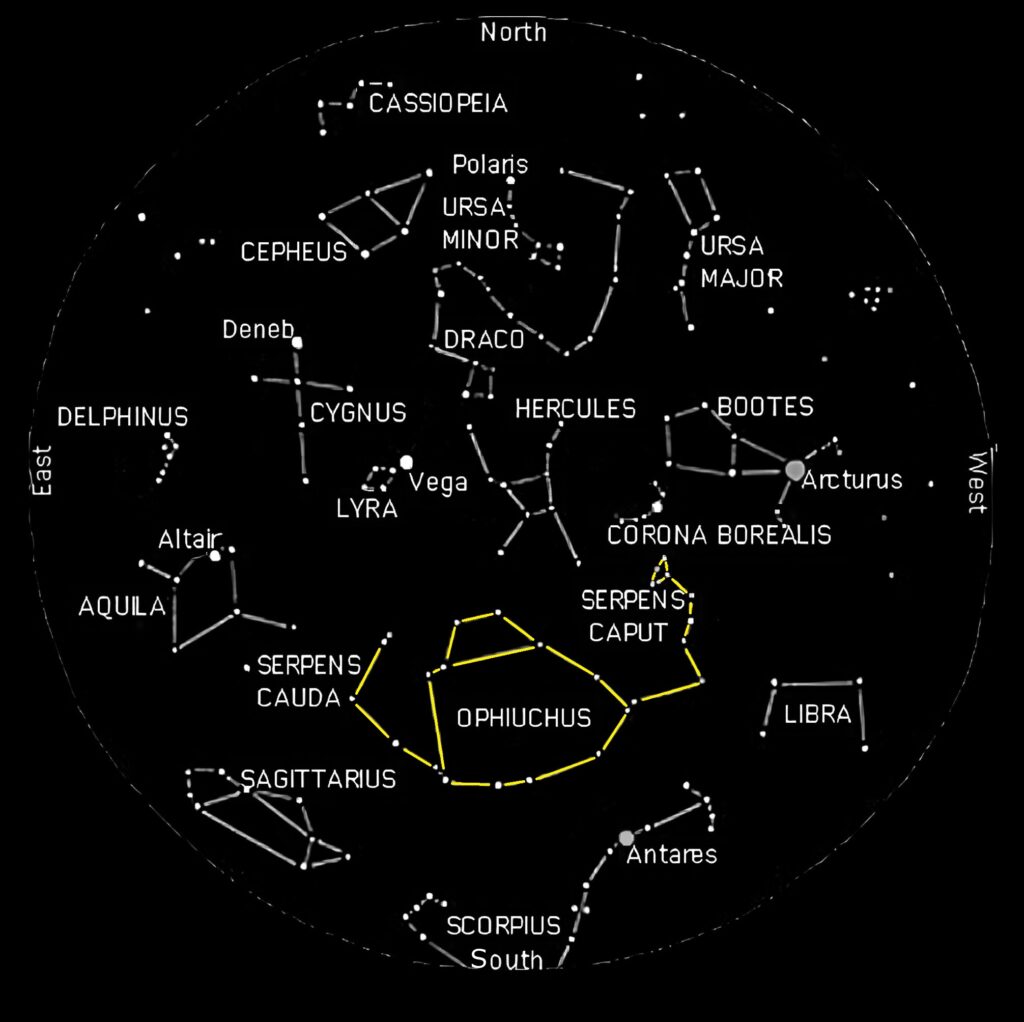
The Serpent constellation depicts a man holding a giant snake, represented by the neighboring Serpens. Its brightest star, α Serpent or Rasalague, is a blue-white subgiant star. Visible during the summer months in the Northern Hemisphere, Ophiuchus is a large constellation that straddles the celestial equator and is home to many star clusters and nebulae, including the dark nebula Barnard 68.
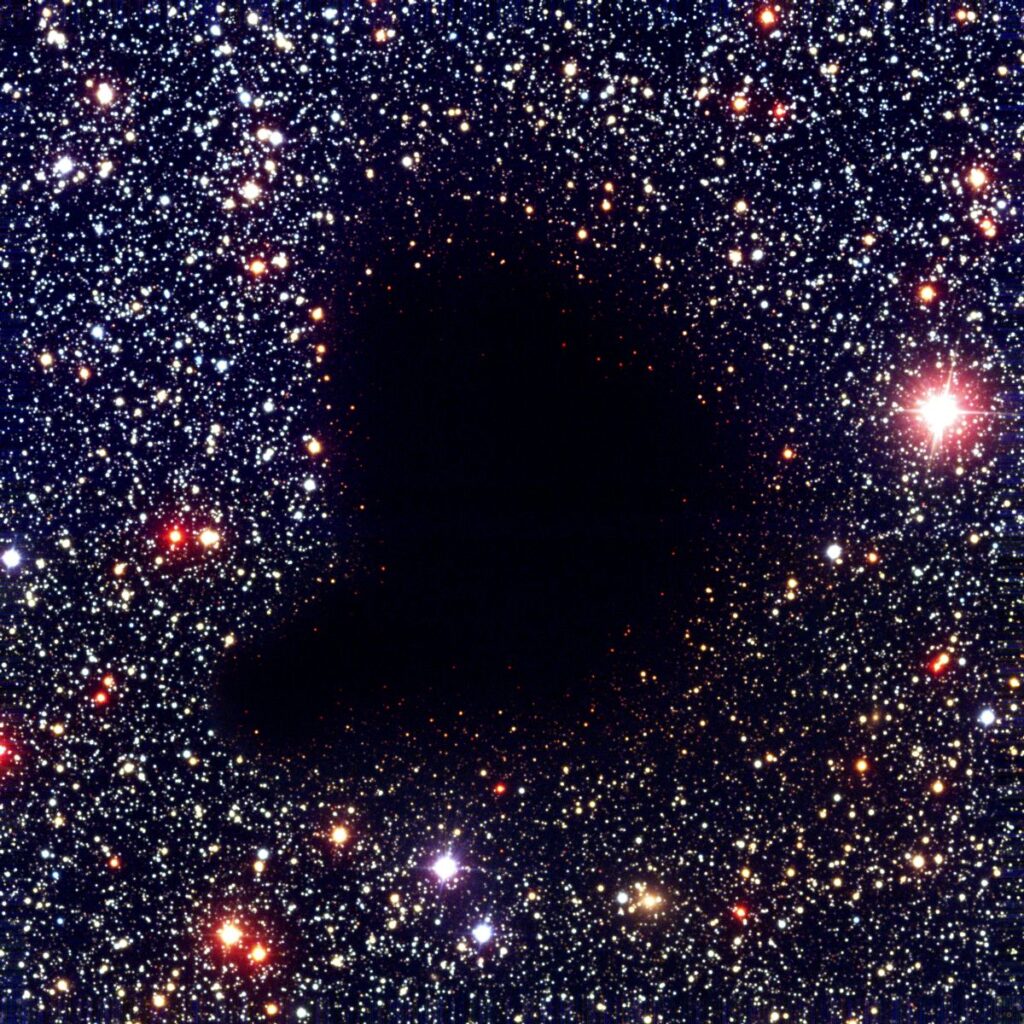
Exploring the Lesser-Known and Less Visible Constellations of Summer
Dolphin (Delphinus)
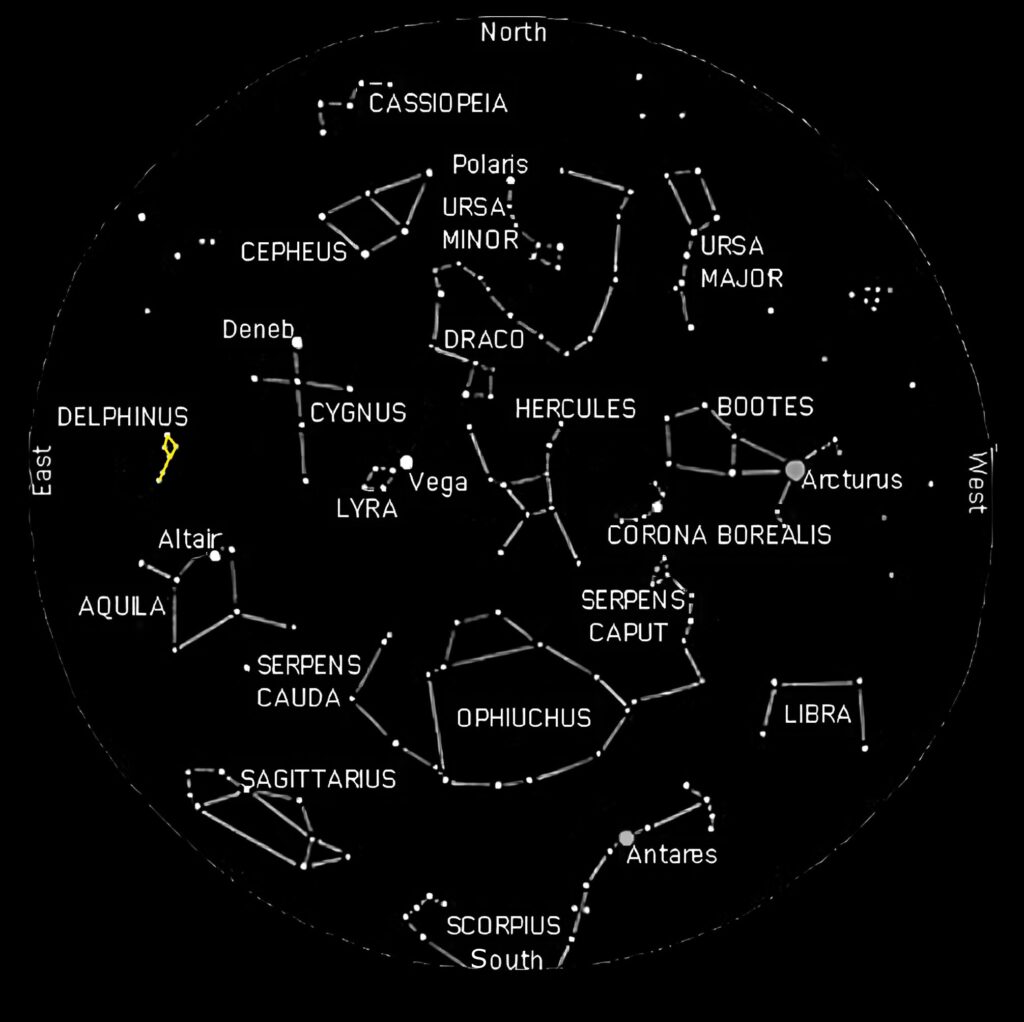
Representing a playful dolphin leaping through the celestial waters, Delphinus is a small and distinctive constellation with its brightest star being β Dolphin, also known as Rotanev.
The constellation is easily recognizable by its diamond-shaped pattern of stars, called Job’s Coffin. Visible during summer and autumn nights in the Northern Hemisphere, Delphinus is a favorite among stargazers.
Lizard (Lacerta)
Lacerta, the Lizard constellation, is a faint group of stars in the Northern Hemisphere, nestled between the constellations of Cygnus and Andromeda. Its brightest star is α Lizards, which is relatively dim compared to other stars in the sky. Despite its inconspicuousness, Lacerta’s zigzagging pattern of stars resembles a slithering lizard and can be seen on clear autumn nights.
Berenice’s Hair (Coma Berenices)
Coma Berenices, known as Berenice’s Hair, is a constellation named after the Egyptian queen Berenice II who sacrificed her hair to the gods’ in exchange for her husband’s safe return.
The constellation is best known for the Coma Star Cluster, representing the queen’s sacrificed braids rather than any bright star.
Visible during spring and early summer, Coma Berenices is also home to many galaxies due to its location in the sky.
Fox (Vulpecula)
The constellation Vulpecula, which represents a small fox, is a faint group of stars in the Northern Hemisphere. Its brightest star is α Foxes, a relatively dim star compared to those in neighboring constellations.
Despite its low visibility, Vulpecula is home to the Dumbbell Nebula, a well-known and easily observed planetary nebula.
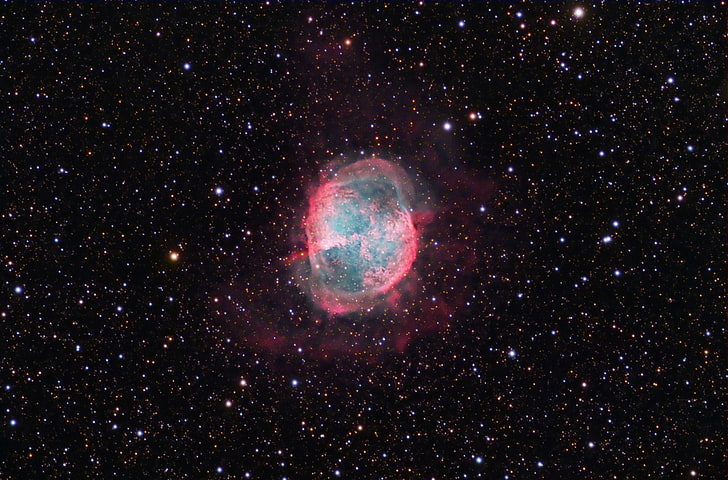
Hunting Dogs (Canes Venatici)
Canes Venatici, the Hunting Dogs constellation, represents the two hunting dogs held by the constellation Bootes. Its brightest star is α Hunting Dogs, also known as Karl’s Heart.
This constellation is particularly notable for the numerous galaxies within its borders, including the famous Whirlpool Galaxy.

Little Leo (Leo Minor)
Leo Minor, or Little Leo, is a small and inconspicuous constellation between Leo and Ursa Major. Its brightest star is 46 Little Leo, a yellow-white giant. Although not particularly prominent, Leo Minor is most visible during the spring months in the Northern Hemisphere.
Lynx
The Lynx constellation is a faint, elongated group of stars in the Northern Hemisphere, named after the wildcat due to its elusive and faint nature. Its brightest star is α Lynx, a white subgiant star. Lynx is best seen during winter and spring and lies between the constellations Ursa Major and Auriga.
Arrow (Sagitta)
The Arrow constellation is the third most minor constellation in the sky, representing an arrow in flight. Its brightest star, γ Arrows, is a yellow-white giant, contributing to the constellation’s distinctive arrowhead shape. You can see Sagitta near the bright star Altair during the summer months in the Northern Hemisphere.
Shield (Scutum)
The constellation Scutum represents a shield honoring the Polish king Jan III Sobieski who defended Europe against the Ottoman Empire. Its brightest star, α Shield, is a yellow supergiant star.
Despite its small size and relative faintness, Scutum is home to the Wild Duck Cluster, a rich open star cluster visible with binoculars or a small telescope.

Scales (Libra)
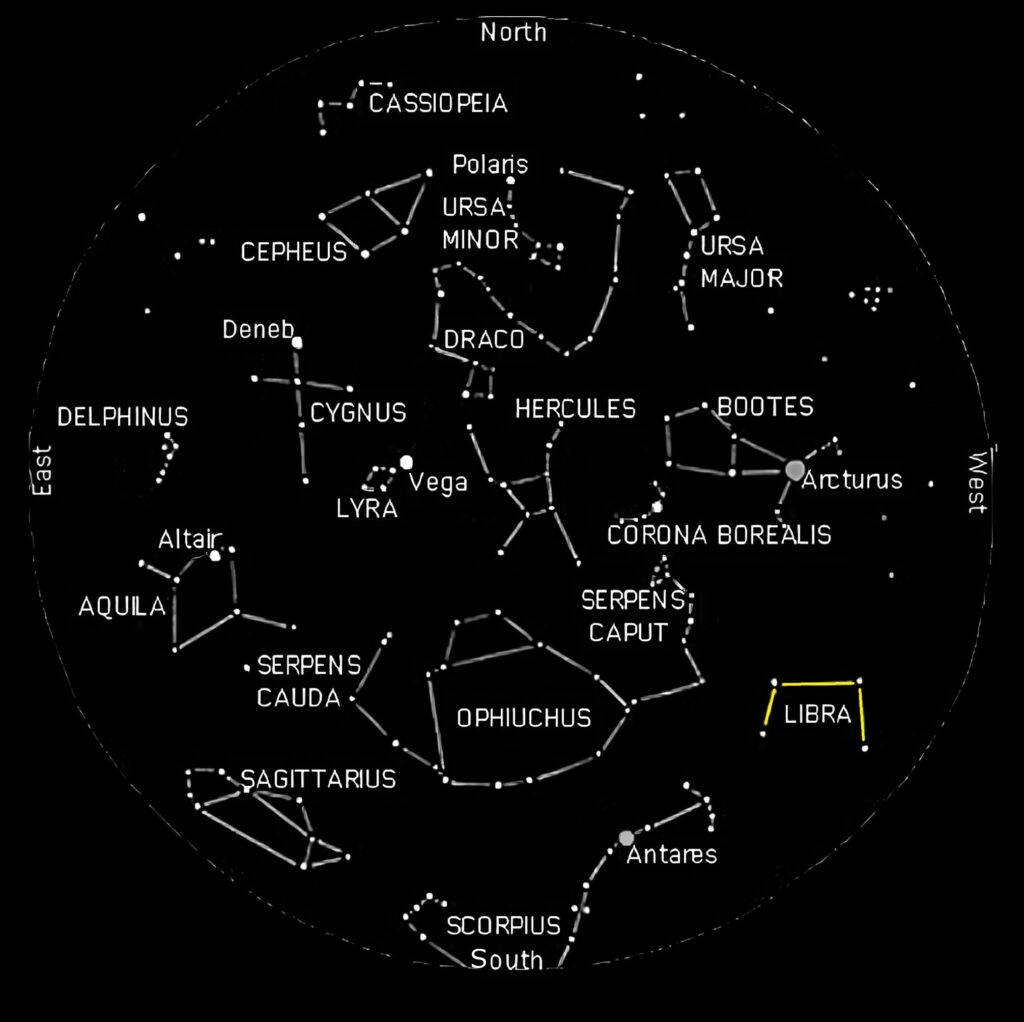
Libra, the Scales constellation, symbolizes the balance and justice often associated with the ancient Roman goddess Justitia. Its brightest star, β Scales, also known as Zubenešemali, is a blue-white dwarf star. Libra is visible during the spring and summer months in the Southern Hemisphere, between the constellations Virgo and Scorpius.
Foals (Equuleus)
The Foals constellation is the second most minor constellation in the sky and represents a petite horse or foal. Its brightest star, α Foals, is a white main-sequence star. Despite its small size and faintness, Equuleus is located near the constellations Pegasus and Delphinus. It can be seen during the late summer and autumn months in the Northern Hemisphere.
Essential Tools for Summer Constellations Stargazing
Beginner-friendly constellation maps
Embarking on a summer stargazing adventure can be both fascinating and educational. To help you navigate and identify the constellations in the night sky, consider using a beginner-friendly constellation map that highlights the brighter and more recognizable constellations. Designers create these maps to simplify locating and identifying constellations for beginners, offering a straightforward and streamlined representation of the night sky. Additionally, such maps often include brief descriptions of each constellation’s mythology and characteristics, helping to create a richer and more engaging stargazing experience.
Blind summer sky maps

As your familiarity with the summer constellations grows, challenge yourself by attempting to fill in a blind summer sky map. This activity will test your knowledge of constellation shapes, positions, and relationships to one another, ultimately enhancing your understanding of the night sky. By working through this challenge, you’ll better appreciate the star patterns and stories they tell.
Binoculars&Telescopes and other Accessories
In addition to a constellation map, consider investing in other essential stargazing tools, such as binoculars or a telescope. These instruments will enable you to explore celestial objects, such as star clusters, nebulae, and galaxies, that are not visible to the naked eye. Additionally, a red flashlight can help you read your map and maintain your night vision. At the same time, a comfortable chair or blanket will make it easier to observe the sky for extended periods.
Stargazing Apps
Finally, consider using a stargazing app or planetarium software on your smartphone or computer to complement your constellation map. These digital tools can provide real-time information about the night sky, guide you through constellation identification, and even simulate the atmosphere for future or past dates. With these resources at your disposal, your summer stargazing experience will be both enjoyable and informative as you immerse yourself in the wonders of the cosmos.
In conclusion, summer constellation stargazing is an awe-inspiring experience that captivates both beginners and seasoned astronomers. With this beginner’s guide, you now have the knowledge to identify some of the most prominent constellations in the summer sky and the tools to enhance your stargazing experience. As you embark on your cosmic journey, remember that the Summer Triangle is a gateway to numerous constellations and celestial objects, setting the stage for endless nights of exploration and wonder. By embracing the constellation map, stargazing tools, and digital resources at your disposal, you’ll develop a profound appreciation for the cosmos and the captivating stories that unfold in the star-studded sky above. So, grab your binoculars, unfold your constellation map, and prepare to embark on a journey that will ignite your curiosity and fuel your passion for the enchanting realm of the night sky.
